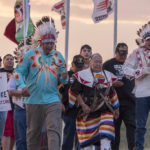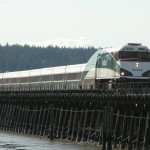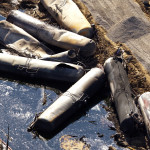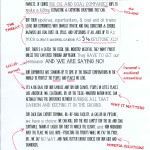Search Results
-
DAPL: “The Fight Will Continue, and It Can Still Be Won”
Editor’s note: Sightline publishes guest articles only rarely. We publish this reflection by Zarina because we feel it highlights a crucial human dimension to the thin green line, the growing movement to obstruct fossil fuel infrastructure. Although the Dakota Access Pipeline is beyond the borders of Cascadia, the opposition movement is of monumental importance to the tribes and First Nations of the Northwest, as well as many others in our...Read more » -
Weekend Reading 7/1/16
Margaret Journalists have been giving a lot of press time to the role of foreign investment and absentee ownership in inflating Vancouver, British Columbia’s housing market these days. But knowing how to interpret that press is another matter. Take for instance this recent article in the Walrus which blamed wealthy investors from mainland China for city’s soaring housing prices. These investors accomplish this, so Kerry Gold, the article’s author, argues,...Read more » -
Coal Dust Threatens Cascadia’s Water and Wildlife
On the West Coast, proposed coal terminal developments would potentially threaten some of the North America’s most iconic and sensitive bodies of water, including the Fraser River, the Salish Sea, the Columbia River, and San Francisco Bay. Yet understanding the magnitude of the risk is challenging because there is little scientific research into the effect of coal and coal dust on aquatic ecosystems and the wildlife they support. What evidence...Read more » -
Weekend Reading 2/26/16
Kristin Funny-shaped districts aren’t the problem with American voting. Electing one representative per district (funny-shaped or otherwise) is the problem. We can solve it with multi-member districts that ensure minority views get represented and it doesn’t matter who draws then district lines. Yes, yes, and more yes. The Brennan Center’s Democracy agenda: Voting rights, money in politics, and redistricting. (Lots to read—all of it good stuff.) Wondering how much climate pollution...Read more » -
Weekend Reading 11/20/15
Eric Sara Bernard points out that, whoops, the Gates Foundation would’ve made billions if it had divested from fossil fuels. David Sucher does the math for Seattle land use and demonstrates that just one triplex per single family city block would make a very significant contribution to meeting the city’s density goals. Rolling out a new blog platform, Communitywise Bellingham casts a gimlet eye on the job creation promises for...Read more » -
Grays Harbor Oil Trains Would be Severely Under-Insured
Oil train derailments—and the catastrophic fires that often result—are distressingly common features of contemporary North American life. No fewer than 10 crude oil-bearing trains have derailed and exploded since the summer of 2013. The risks to life and limb are plain enough. Less understood is the risk that these oil trains pose to taxpayers, governments, and public budgets. No railroad in North America carries anywhere close to a level of...Read more » -
Weekend Reading 9/25/15
Alan “To use a telling phrase of the Rev. Martin Luther King, we can say that we have defaulted on a promissory note and now is the time to honor it.” -Pope Francis The first Pope from the global South, who named himself for St. Francis of Assisi, quotes Dr. King —who said the words in the time of the first Catholic president—to the first black president, in a ringing...Read more » -
Careers
-
Walking and Talking the Thin Green Line
In Oregon, Washington, and British Columbia, we’re faced with the prospect of becoming a primary gateway for exporting massive fossil fuel deposits—Alberta tar sands, Bakken shale oil, and coal in Wyoming and Montana’s Powder River Basin—to Asian markets. But, the region is shaping up to be what Eric de Place calls a Thin Green Line, a last line of defense against the fossil fuel industry’s relentless pursuit of profit—and that...Read more » -
Seattle’s Vision Zero Plan
Seattle became the second major Northwest city this week to promise to end all traffic deaths and serious injuries by embracing Vision Zero, a transportation approach that prioritizes keeping people alive and building streets that work for everyone. The biggest changes for the next year are: Reduce downtown speed limits by 5 mph to 25 mph, improve 10 downtown intersections to benefit people walking, create slow “20 mph zones” in...Read more »












